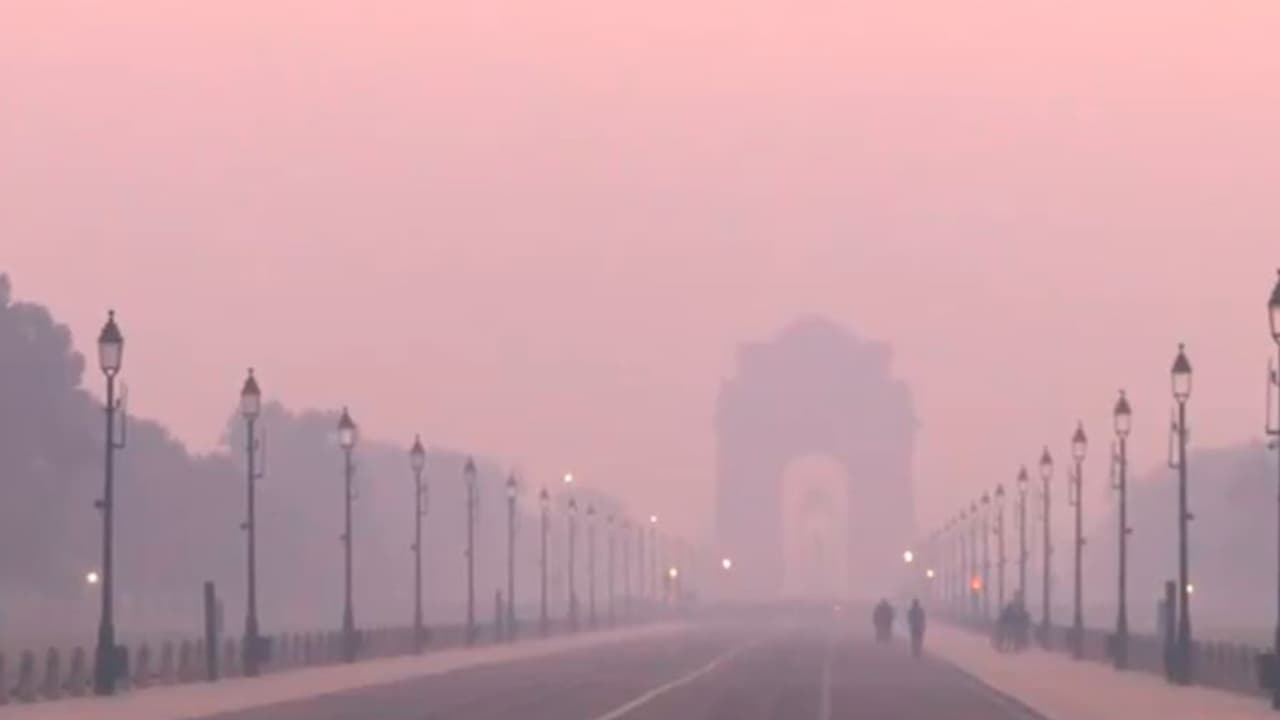A thick smog layer covered New Delhi as the city’s AQI stood at 385 (‘very poor’). Several areas, including Rajghat and ITO, were in the ‘severe’ category. GRAP-III measures are in place, and the Supreme Court has sought a report on stubble burning.
A layer of thick smog engulfed several areas of the national capital on Sunday morning as Delhi woke up to an AQI of 385, in the ‘very poor’ category and showing little to no improvement from Saturday morning’s 386 AQI.
Visuals from India Gate showed the iconic monument engulfed behind a thick layer of smoke as joggers and walkers alike hoped to go about their usual morning routine. Rajghat and ITO were worse off, recording an AQI of 417, which placed them in the ‘severe’ category, according to data released by the Central Pollution Control Board (CPCB). Anand Vihar, Alipur, and Ashok Vihar also recorded AQI levels in the range of 400-415, which falls within the severe category. Chandani Chowk area recorded an AQI of 420, while Dwarka recorded 378 AQI. Similarly, at Dhaula Kuan, vehicles were travelling through a layer of thick smog as the area recorded an AQI of 338.
The thick smog, along with deteriorating air quality, mercury continued to hover around the 10-degree Celsius mark, with some areas recording even lower temperatures.
Earlier, on November 15, shallow fog was also reported in the early morning hours at Safdarjung Airport, from around 7 AM to 8:30 AM.
GRAP-III Implemented to Combat Pollution
Amid the deteriorating air quality in the national capital, the Graded Response Action Plan (GRAP) III has been implemented across Delhi by the Commission for Air Quality Management (CAQM). The measures aim to control emissions through stricter restrictions on construction, vehicular movement and industrial operations.
Under GRAP-III, curbs include a ban on most non-essential construction activities, restrictions on BS-III petrol and BS-IV diesel four-wheelers, suspension of classes for students up to Class 5 with a shift to hybrid or online learning, curbs on industrial operations dependent on non-clean fuel, and a ban on non-emergency diesel generator sets.
Supreme Court Intervenes on Stubble Burning
The Supreme Court directed the governments of Punjab and Haryana to file a status report on the measures taken to curb stubble burning, which contributes to the air pollution crisis in the Delhi-NCR region.
A bench of Chief Justice of India BR Gavai and Justice K Vinod Chandran ordered, “We direct the state of Punjab and Haryana to file a report on what steps are being taken to curb stubble burning.” (ANI)
(Except for the headline, this story has not been edited by Asianet Newsable English staff and is published from a syndicated feed.)
